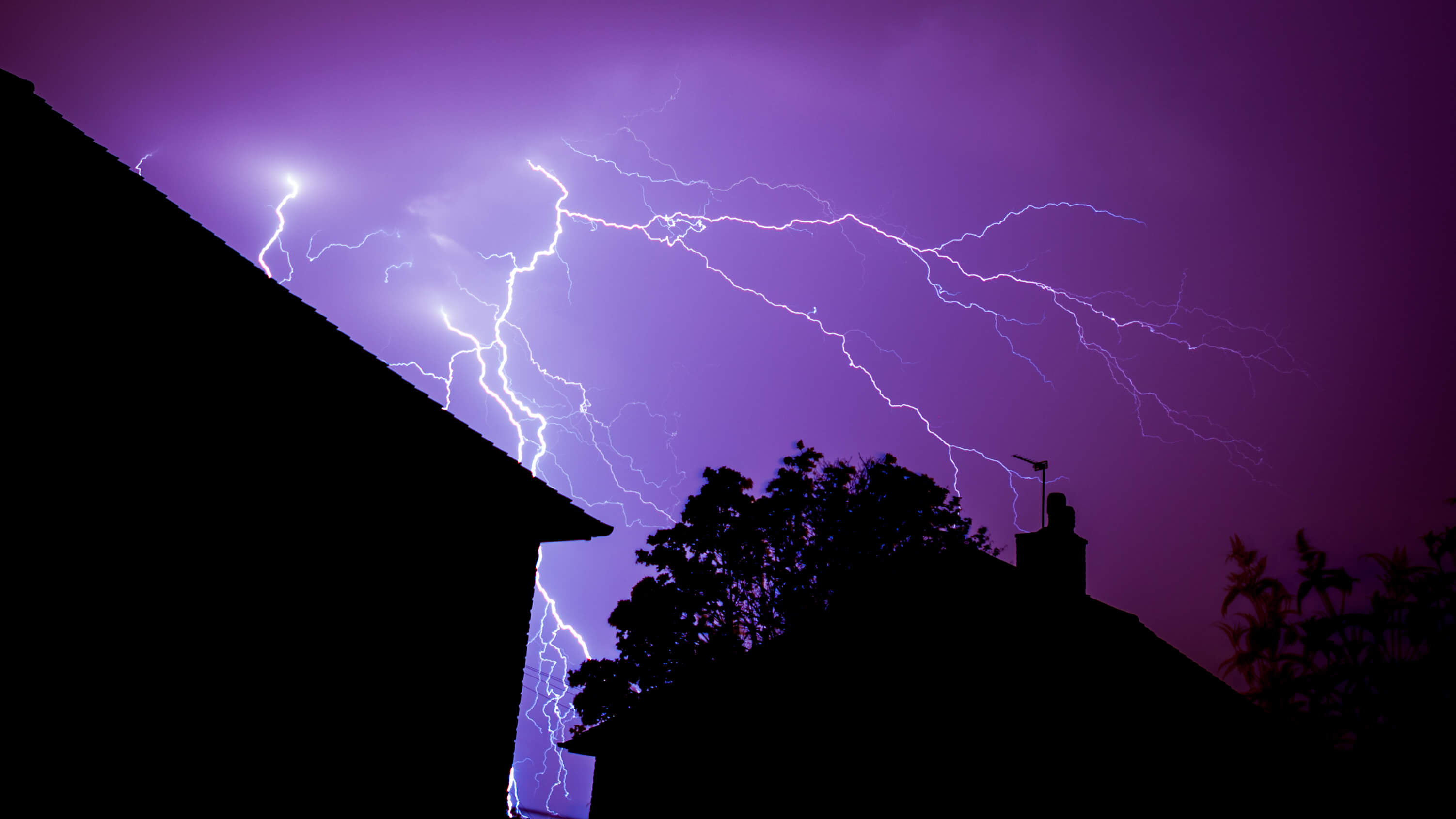Imagine yourself as a cloud, happily floating over the surface of the Earth without a care in the world. As you drift across the sky, the millions of tiny water droplets and ice crystals that you are composed of brush against each other, causing a buildup of electric charges in your cloud body. The negative charges fall down to your cloud feet, while the positive charges rise up to your cloud head.
Tidbit: Lightning can strike more than 100 miles away from the parent thunderstorm.
Eventually, the difference between the charges becomes so great a massive bolt of electricity travels between your positively-charged head and your negatively-charged feet. This powerful transfer of electrical energy is what we on the ground know as lightning – if you really were a cloud, at this point you would likely be very uncomfortable.

The Temperature of Lightning and Effects
Here’s where it gets cool: as a lightning bolt travels through a cloud, it causes nearby air to heat up. The temperature of lightning bolt ranges from 15,000 to 60,000 °F – that’s hotter than the surface of the sun (on the order of 10,000 ºF). The heat causes the air around the bolt to expand violently, smashing through neighboring cooler air faster than the speed of sound.
All moving things create pressure waves in the air, known as sound waves. Anything that moves faster than the speed of sound will force these waves to pile on top of each other, resulting in a powerful shockwave known as a sonic boom. Sonic booms are created any time something moves faster than the speed of sound; the larger the object is, the louder the boom will be. For instance, when you hear the sound of a whip crack, what you are really hearing is a tiny sonic boom caused by the tip of the whip breaking the sound barrier.
In the case of thunder, we’re hearing the sonic boom created by an enormous amount of air being displaced faster than the speed of sound. Luckily, these sonic booms occur high in the sky – otherwise we’d spend a lot of time fixing broken windows.
![]() Fun Fact: Thunder and lightning always occur at the exact same time, but because light travels faster than sound we see the lightning first. Using the time between the two, you can estimate how close the lightning strike was.
Fun Fact: Thunder and lightning always occur at the exact same time, but because light travels faster than sound we see the lightning first. Using the time between the two, you can estimate how close the lightning strike was.
Note: the distance calculated is valid only for that particular lightning strike; one calculation says nothing about the distance to the storm and it does not affirm your “safe distance”. Lightning occurs all around and throughout the thunderstorm at varying distances from your location. Furthermore, lightning can occur from the cirrus anvil many miles away from the parent thunderstorm. Therefore, you can never assume that you are a “safe” distance from a thunderstorm based on your distance from one lightning strike.
